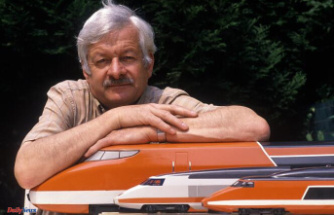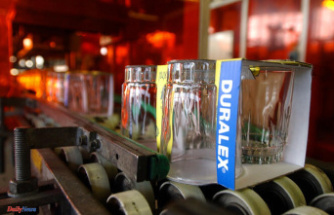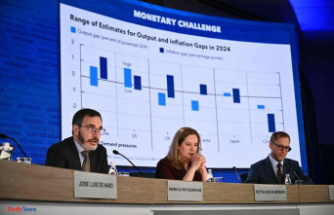Electric vans are increasingly in demand, especially in urban and local delivery traffic. The Maxus eDeliver9 relies on the longest possible ranges - with a relatively large battery and low consumption. The test shows: The e-transporter keeps what the manufacturer promises.
Too little electric range is at least annoying in a car. In commercial vehicles, on the other hand, a lack of energy is almost always a serious problem. Maxus wants to meet the eDeliver9 in the one-ton payload class with a relatively large battery and low practical consumption. Successful, as a range test has shown.
The eDeliver 9 from the SAIC subsidiary Maxus is available with either a 5.55 or 5.94 meter length or a 3.37 or 3.76 meter wheelbase. The long version is available with a height of 2.77 meters on request, the standard is 2.53 meters. When it comes to the battery, the customer can choose between three alternatives with 52 kWh, 72 kWh and 89 kWh, which offer a standard range of between 186 and 296 kilometers.
Depending on the battery and vehicle version, the payload varies between 860 and 1350 kilograms, the trailer load is 1.5 tons in all versions. The permissible total weight is 3.5 tons for the versions with a normal roof and 4 tons for the high-roof model. The manufacturer specifies the loading volume as 9.7 to 12.95 cubic meters.
The long version with a normal roof (L3H2), equipped with the largest battery, was presented for testing. The manufacturer promises almost 300 kilometers, exactly 300 kilometers on-board computer. Such a round value after the initial loading process initially seems suspicious: is the digital data service provider a professional optimist? We know the trick from other manufacturers of automatically setting the display to the standard value after unplugging the charging cable. The disappointment is all the greater when, after a few kilometers of driving, x times as many kilometers of range have already been used up.
The eDeliver 9 saves on such tricks. In fact, he is almost official-like in counting. On the 300-kilometre fuel consumption drive, the odometer and remaining range meter almost always counted in step - one up, the other down.
It was not the WLTP cycle test that was followed, but the 39-kilometer, fairly level home route: around 50 percent city traffic, 40 percent country roads and 10 percent motorway - based on the probably usual area of application for electrically powered vans. These are particularly suitable for logistics service providers or commercial companies that operate primarily in a small to medium radius around their location.
The loaded eDeliver completed seven standard rounds, taking just under an hour each time. At around 25 degrees, the outside temperatures were in the comfortable range for the battery, but in return the air conditioning had to work hard at least in the middle of the day and in the afternoon. Astoundingly, exactly 275 kilometers were missing on the clock after completing the last full lap, remaining range 25 kilometers. Such an exact result is a premiere on the standard track.
The drivers always had the feeling that they could still reduce consumption: either by doing without the air conditioning or by reducing the speed on the motorway and country roads. In pure city traffic, there should be a lot more than the 296 kilometers range determined in the road mix. The manufacturer himself speaks of up to 353 kilometers. On the other hand, the range should also deviate under less favorable conditions, for example in winter or in mountainous regions.
If you want to drive longer distances, you have to charge on the way. The Maxus comes up with a comparatively high speed here: it refuels with up to 72 kW at the fast charging station, after 10 minutes there is an ideal range of 100 kilometers on the clock. Up to 11 kW are available on a wall box or normal charging station, and a full charge should take 7.5 hours. It is therefore possible to charge overnight, albeit just barely. At least an option for a 22 kW on-board charger would be nice.
In the practical test, the drive showed itself to be quite capable of urban and interurban use. The electric motor provides the front axle with 150 kW/204 hp and 310 Nm. According to the manufacturer, 50 km/h is reached after 5.8 seconds and 100 km/h after 18.4 seconds. Then it's over with further propulsion - more than 100 km/h is not possible. That should be manageable in view of the more urban application scenario. Also because the acceleration and high-torque electric drive fits well into the commercial vehicle.
Not only because of its power, but above all because of the outstanding running smoothness compared to a diesel - neither knocking nor vibrations disturb the interior. Maxus could only develop the wind and road noise a little more consistently from the cockpit. However, most other commercial vehicle manufacturers also attach comparatively little importance to noise insulation.
The recuperation of the electric motor can be adjusted in three stages, one-pedal driving is possible on the highest level. Alternatively, the transporter can also be decelerated using the brake pedal, which could generally be a little more gripping.
The driver's workplace is functionally and ergonomically designed, and there is space for two colleagues on the seat next to it. A standard 10-inch touchscreen offers smartphone connectivity, while air conditioning and parking sensors ensure comfortable working as standard. There are also LED lights, lane change assistant and blind spot warning. An emergency brake assistant, heated seats and digital radio are also available for the L2 variants.
The net prices start at 51,500 euros for the small version with the smallest battery, if you want the largest battery, you have to transfer at least 65,000 euros, as in the case of the test vehicle.












